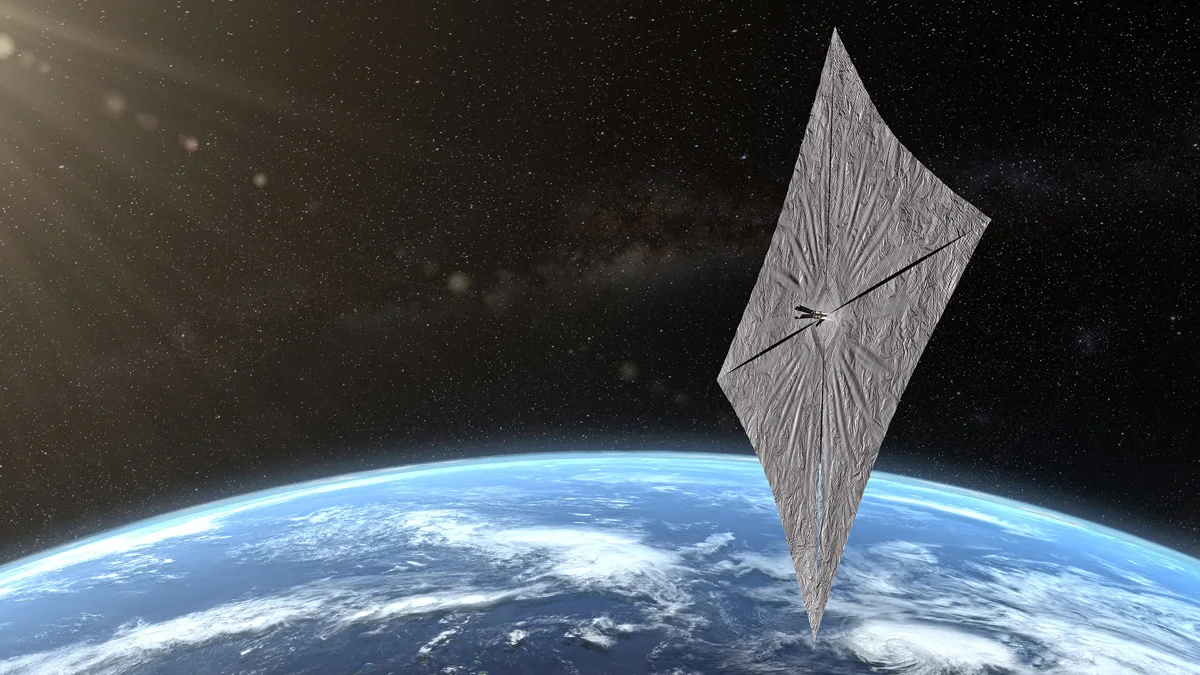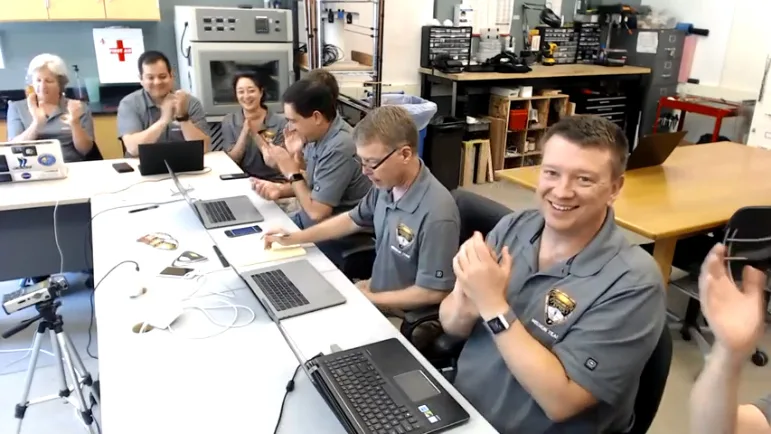
LightSail 2 is now flying through space propelled by sunlight
What's up in space? The Planetary Society goes solar sailing, Marsquakes, and a new opportunity for Canadian students to work with NASA!
Bill Nye and the Planetary Society are now sailing in space!
Okay, Bill Nye and the other people who run and support the Planetary Society are actually still here on Earth, but the tiny cubesat spacecraft they sent into orbit back in June - LighSail 2 - has now unfurled its solar sail, and is flying through space propelled by the light from the Sun!

The Planetary Society LightSail 2 team celebrates sail deployment on July 23, 2019, from mission control at California Polytechnic State University San Luis Obispo. LightSail Program Manager Bruce Betts sits at the far right, with LightSail Project Manager Dave Spencer to his left, and Avionics Engineer Alex Diaz to Dave's left. Barbara Plante, Founder and President of Boreal Space, sits to the far left. Credit: The Planetary Society
The LightSail 2 team sent the commands for the spacecraft to deploy its sail at around 2:45 p.m. EDT, on Tuesday, July 23, 2019, and within moments the satellite beamed back reports that it had extended the four booms, followed shortly by the news that it had fully deployed its solar sail.
Stay tuned for more updates to come!
WHAT DOES A MARSQUAKE FEEL LIKE?
NASA's InSight lander has been sitting on the surface of Mars for over 8 months now, waiting for the faint rumbles of marsquakes to pass by.
These marsquakes are the shaking of the ground, similar to what we have here on Earth, caused either by movement of material inside the planet, or, more likely, through impacts on the Martian surface by meteorites.
We've already heard what a marsquake sounds like, taken directly from what the lander's sensitive seismograph picked up, but what does a marsquake look like though, compared to what we see here on Earth, and what we know of moonquakes?
As the video shows, when an earthquake occurs, we feel two kinds of shaking - the primary or p-waves, which feel like a sudden push and pull motion, followed a short time later by the secondary or s-waves, which feel like up-and-down or side-to-side motion.
A moonquake is quite different, though. There are still the p- and s-waves, but they happen almost simultaneously, overlapped on top of one another, and they slowly ramp up, stronger and stronger, and can last for quiet some time. (Note that in the video, the intensity of the shaking has been magnified by 1 million times, so these are very faint tremors!)
On Mars, the scientists didn't really know what to expect. As it turns out, while they're even more faint than moonquakes (the simulation magnifies the intensity by 10 million times!), marsquakes are unlike anything that happens on Earth or the Moon. There are two kinds of quakes, high-frequency and low-frequency, each of which may indicate the distance to the origin point (close for high-frequency, and distant for low-frequency?).
"Mars isn't as simple as we might have hoped," says John Clinton, the head of ETH Zürich's Marsquake Service. "The ground motion is not like we see here on Earth. It is sort of a half-way house between Earth and the Moon."
Given that Mars is roughly twice as big as the Moon, and roughly half as large as the Earth, this makes sense, but it still makes for some very strange quake-hunting.
CANADIAN STUDENTS, HERE'S YOUR CHANCE TO INTERN WITH NASA!!
Every year, NASA recruits hundreds of high school, college and university students to fill a plethora of interships across the agency. Many of these interns are American, of course, but there is a growing list of countries that can apply for NASA's International Internship (NASA I²) Program, and Canada has just joined that list!
As of July 22, 2019, the Canadian Space Agency (CSA) announced that they have signed an agreement with NASA for Canadian university students to participate in the program!
The details of the program are due to come out over the next few months, according to the CSA, so that the first group of Canadian students can participate in the program in 2020.
Stay tuned for updates!
Sources: The Planetary Society | NASA | CSA






